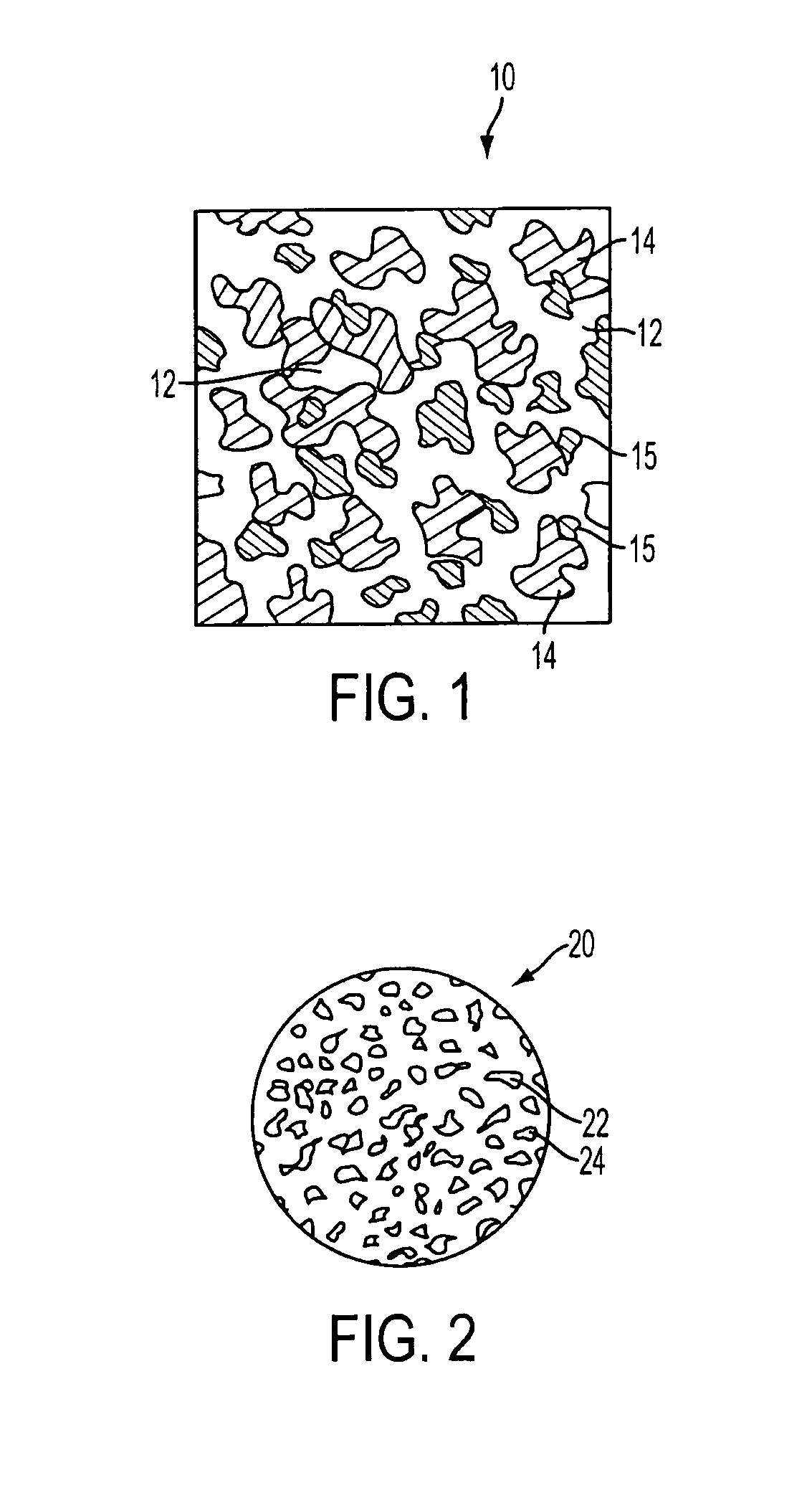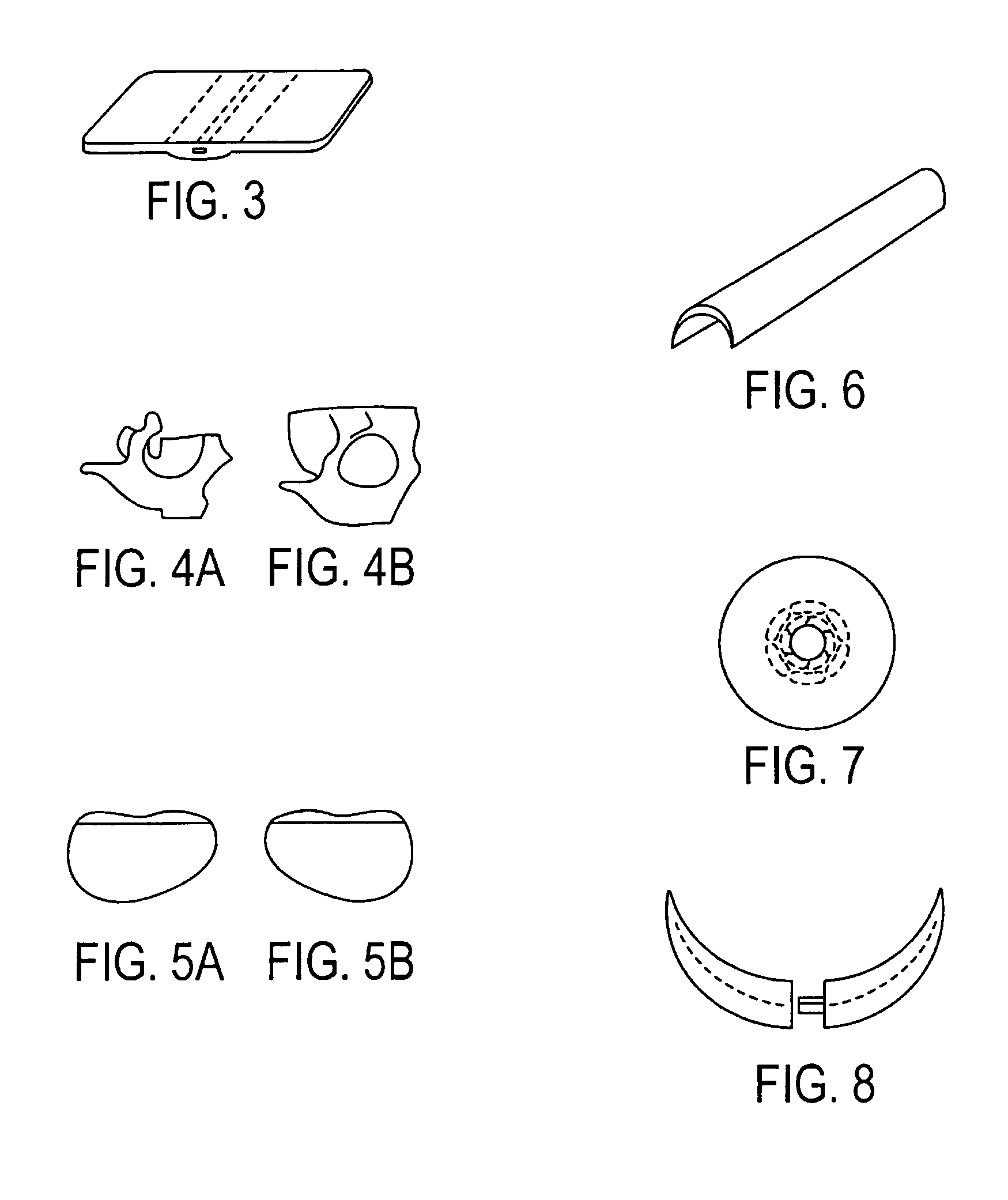Composite surgical implant made from macroporous synthetic resin and bioglass particles
a synthetic resin and bioglass particle technology, applied in the field of surgical implants, can solve the problems of altering the desired implant effect, and compromising the desired reconstructive or aesthetic, so as to improve the fibrovascular ingrowth properties
- Summary
- Abstract
- Description
- Claims
- Application Information
AI Technical Summary
Benefits of technology
Problems solved by technology
Method used
Image
Examples
Embodiment Construction
[0040]In a preferred embodiment of the invention, synthetic resin fines are combined with approximately 12% bioglass and then sintered together to result in an porous implant having a matrix with bioglass distributed throughout the matrix. The structure can take the form of a wide variety of shapes, such as those described above and that are currently available from Porex Surgical, Inc. While porous polyethylene is a preferred synthetic polymer, it contemplated that other porous polymer materials can be advantageously used. The implant material is made by adding bioglass to a batch of polyethylene fines having a predetermined particle size that results in a mixture having approximately 10%–20% volume bioglass and the remainder polyethylene fines. Although increased volumes of bioglass may be used, the structural strength of the resulting implant diminishes as the ratio of bioglass is increased. In the preferred embodiment the size of the resin fines that are selected are roughly the...
PUM
| Property | Measurement | Unit |
|---|---|---|
| particle size | aaaaa | aaaaa |
| size | aaaaa | aaaaa |
| diameter | aaaaa | aaaaa |
Abstract
Description
Claims
Application Information
 Login to View More
Login to View More - R&D
- Intellectual Property
- Life Sciences
- Materials
- Tech Scout
- Unparalleled Data Quality
- Higher Quality Content
- 60% Fewer Hallucinations
Browse by: Latest US Patents, China's latest patents, Technical Efficacy Thesaurus, Application Domain, Technology Topic, Popular Technical Reports.
© 2025 PatSnap. All rights reserved.Legal|Privacy policy|Modern Slavery Act Transparency Statement|Sitemap|About US| Contact US: help@patsnap.com



